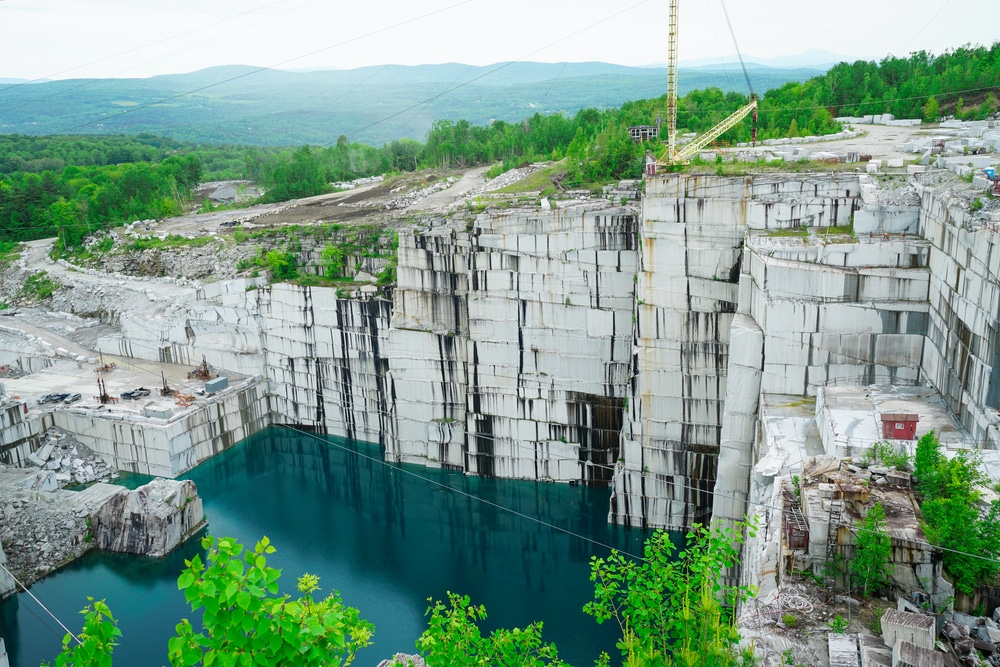Exploring Granite Quarries in South Africa Sector: From Quarry to Work of art
Exploring Granite Quarries in South Africa Sector: From Quarry to Work of art
Blog Article
Discovering the Rich History and Lasting Practices of Granite Quarrying
As we base on the precipice of uncovering the complex tapestry of granite quarrying, a trip through time reveals not just the physical act of removing stone yet likewise the cultural and historic importance woven right into the very textile of this practice. From the ancient beginnings that laid the foundation for contemporary quarrying strategies to the sustainable methods that are forming the future of this industry, each sculpt mark on granite surface areas narrates waiting to be uncovered (granite quarries in south africa). The heritage of granite quarrying stretches much past mere removal; it is a testimony to human ingenuity, strength, and the enduring attraction of this marvelous rock
Ancient Beginnings of Granite Quarrying
Going back to ancient human beings, the method of quarrying granite has actually been an important part of human history and building improvement. The earliest proof of granite quarrying dates back to ancient Egypt, where substantial pyramids and elaborate sculptures were crafted from this sturdy stone. The Egyptians used primitive devices to extract granite blocks from quarries, showcasing the significance of this product in their huge building and constructions.
Relocating forward in history, the Greeks also made significant contributions to the quarrying of granite. The Greeks used granite in various architectural marvels, such as holy places and statues, showing their ability in shaping and sculpting this durable rock. The Romans better refined the techniques of quarrying granite, utilizing sophisticated devices like knives and hammers to extract and shape granite for their iconic frameworks.
Via the centuries, the practice of quarrying granite has advanced, with modern technologies enhancing effectiveness while maintaining the classic appeal of this all-natural stone - granite quarries in south africa. From ancient human beings to contemporary builders, the legacy of granite quarrying continues to shape our world
Development of Quarrying Techniques
The advancement of quarrying methods has been marked by a continuous development in the direction of higher efficiency and accuracy in drawing out granite. From the simple methods used by our forefathers to the sophisticated modern technologies used in modern quarrying procedures, the market has undertaken significant advancements. Early quarrying strategies included manual work with standard tools such as knives, hammers, and wedges to draw out granite blocks from the planet. As people advanced, strategies like fire-setting and primitive dynamites were introduced to assist in the extraction procedure.
In even more recent times, the development of equipment reinvented the quarrying sector, enabling much faster extraction rates and raised efficiency. Technologies such as ruby wire saws, high-pressure water jets, and pneumatically-driven drills have actually become typical in modern quarries, permitting specific cutting and reduced waste. In addition, developments in computer-controlled devices and 3D modeling have actually maximized quarrying operations, causing marginal environmental impact and improved sustainability techniques. As the demand for granite remains to increase, the advancement of quarrying strategies remains essential to meeting market needs effectively and sustainably.
Cultural Importance of Granite
Granite holds a profound social value across numerous civilizations due to its long-lasting presence in architectural work of arts and admired monuments. The social importance of granite expands beyond its physical attributes; it symbolizes resilience, security, and timelessness, making it an icon of enduring heritages and traditions.

Sustainable Practices in Quarrying
Among the abundant history of granite quarrying and its social relevance exists a growing emphasis on lasting methods within the sector. As ecological awareness and worries concerning resource deficiency have actually enhanced worldwide, the quarrying field has progressively embraced sustainable approaches to reduce its influence on the atmosphere and surrounding areas.

Moreover, improvement and rehab of quarry sites post-extraction are essential to sustainable practices. By restoring quarried areas to an all-natural or beneficial state, such as creating wildlife environments or entertainment rooms, quarriers can balance out the environmental footprint of their operations and contribute favorably to the neighborhood ecological community.
Heritage of Granite Quarrying
With a historical backdrop soaked in craftsmanship and industrial progress, what enduring effect has granite quarrying left on the landscape of modern culture? The legacy of granite quarrying transcends mere extraction techniques; it has formed building wonders, metropolitan landscapes, and social heritage worldwide. The resilient nature of granite has actually made it a favored choice for monoliths, structures, and framework, standing as a testimony to the skill and artistry of quarry workers throughout generations.
Additionally, the financial footprint of granite quarrying can not be forgotten. The sector continues to supply employment possibility and drive neighborhood economies in areas where granite extraction is widespread. It has additionally spurred technical improvements in quarrying techniques and equipment, bring about more reliable and sustainable practices.
In terms of sustainability, the legacy of granite quarrying consists of efforts to minimize environmental influences via reclamation projects and accountable resource monitoring. By stabilizing economic interests with ecological stewardship, the industry aims to guarantee that future generations can proceed to take advantage of this enduring natural deposit.
Conclusion

Report this page